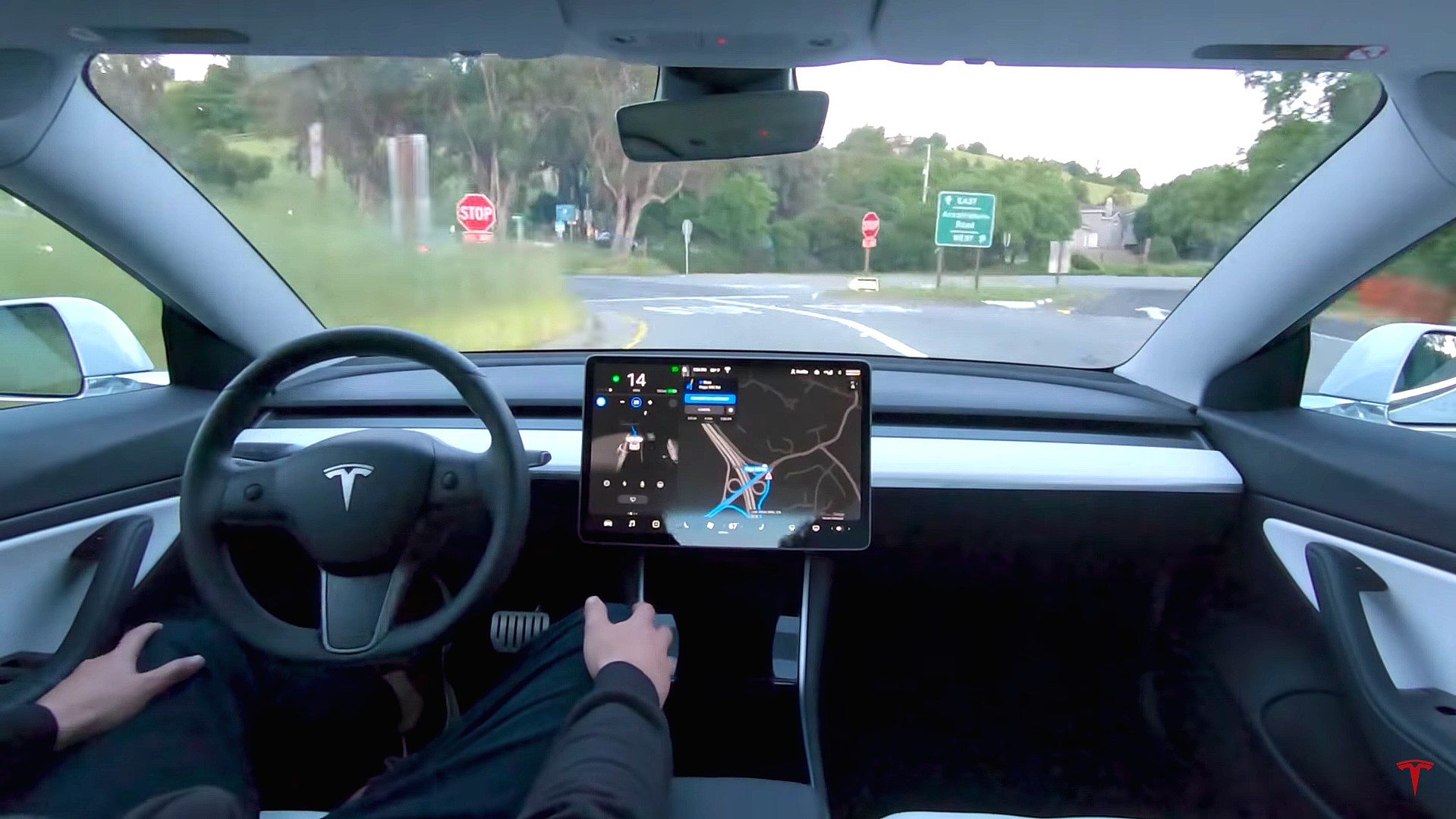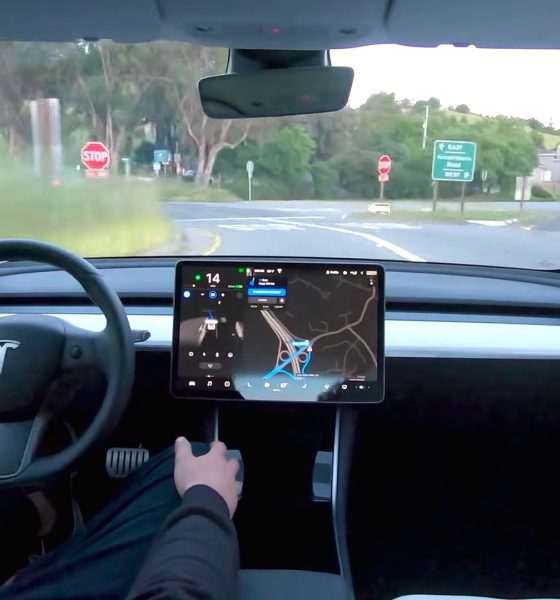

News
Tesla Full Self-Driving monthly subscriptions poised for 2021 launch
Tesla is planning on launching monthly subscriptions to Full Self-Driving by 2021, announced Elon Musk in a recent tweet. He broke the news after setting an updated timeframe for FSD beta’s ~$2,000 price increase on Thursday, October 29.
A subscription service would make FSD more affordable to Tesla owners because drivers could opt to use the service only when necessary. From a consumer’s perspective, FSD might be worth buying if it’s bound to be used often. However, a subscription service might be more practical for drivers who won’t use Tesla’s Full Self-Driving suite daily and only need it during long drives or trips.
An FSD subscription service would not only benefit customers though. It would also benefit Tesla, specifically its AI team. The more data and driving experience FSD’s AI gathers, after all, the better it will perform.
With this in mind, making FSD as accessible as possible to Tesla owners should be a key priority for the company. Elon Musk predicted that FSD could be worth more than $100,000 one day. To reach that price point, Tesla’s Full Self-Driving capabilities would need to improve dramatically. More real-world driving data means that more improvements could be made.
Tesla’s subscription service has been in the works for some time. EV enthusiast @greentheonly spotted the first signs of a possible FSD subscription service drop while sifting through Tesla’s code in April earlier this year.
“[T]here’s code for pay as you go subscription plan, has been for quite a while. Waiting for that eventual time when it will make sense I am sure,” green tweeted then.
Two days after the owner-hacker talked about the code for Tesla’s FSD subscription plan, Elon Musk and Zachary Kirkhorn confirmed the news during TSLA’s Q1 2020 earnings call. “I think we will offer Full Self-Driving as a subscription service, but it will be probably toward the end of this year,” answered Elon Musk noted.
Musk added that buying Tesla’s Full Self-Driving suite at full price might be a better investment. “I should say, it will still make sense as — to buy FSD as an option as, in our view, buying FSD is an investment in the future. And we are confident that it is an investment that will pay off to the consumer — to the benefit of the consumer. In my opinion, buying FSD option is something people will not regret doing,” he said.”
However, Musk was not wrong about perceiving FSD as an investment. In July 2020, a few months after the Q1 earnings call, Tesla raised the price of FSD from $7000 to $8000. After the FSD price increase, Musk reminded the public that Tesla’s Full Self-Driving software would increase in value every few months. “Those who buy it earlier will see the benefit,” he noted.
Musk held true to his word. Tesla recently released its limited Full Self-Driving beta, which is expected to feature improvements from the highly-anticipated Autopilot rewrite. Based on recent real-world tests of Tesla’s improved FSD suite, the EV automaker has made leaps and bounds in the development of its self-driving driving software.
Corresponding to Tesla’s FSD beta was another price increase, merely months after the $1,000 raise in July 2020. Yesterday, Elon Musk announced Tesla would increase the price of FSD by ~$2,000, bringing it up to $10,000. Given the dramatic changes seen in Tesla’s limited FSD beta, the price increase makes sense to some.
However, it does also makes FSD less affordable to others. A subscription service for FSD would make Tesla’s autonomous software more accessible to those who aren’t willing to or can’t shell out $10,000 or more upfront.

News
Tesla FSD fleet is nearing 7 billion total miles, including 2.5 billion city miles
As can be seen on Tesla’s official FSD webpage, vehicles equipped with the system have now navigated over 6.99 billion miles.

Tesla’s Full Self-Driving (Supervised) fleet is closing in on almost 7 billion total miles driven, as per data posted by the company on its official FSD webpage.
These figures hint at the massive scale of data fueling Tesla’s rapid FSD improvements, which have been quite notable as of late.
FSD mileage milestones
As can be seen on Tesla’s official FSD webpage, vehicles equipped with the system have now navigated over 6.99 billion miles. Tesla owner and avid FSD tester Whole Mars Catalog also shared a screenshot indicating that from the nearly 7 billion miles traveled by the FSD fleet, more than 2.5 billion miles were driven inside cities.
City miles are particularly valuable for complex urban scenarios like unprotected turns, pedestrian interactions, and traffic lights. This is also the difference-maker for FSD, as only complex solutions, such as Waymo’s self-driving taxis, operate similarly on inner-city streets. And even then, incidents such as the San Francisco blackouts have proven challenging for sensor-rich vehicles like Waymos.
Tesla’s data edge
Tesla has a number of advantages in the autonomous vehicle sector, one of which is the size of its fleet and the number of vehicles training FSD on real-world roads. Tesla’s nearly 7 billion FSD miles then allow the company to roll out updates that make its vehicles behave like they are being driven by experienced drivers, even if they are operating on their own.
So notable are Tesla’s improvements to FSD that NVIDIA Director of Robotics Jim Fan, after experiencing FSD v14, noted that the system is the first AI that passes what he described as a “Physical Turing Test.”
“Despite knowing exactly how robot learning works, I still find it magical watching the steering wheel turn by itself. First it feels surreal, next it becomes routine. Then, like the smartphone, taking it away actively hurts. This is how humanity gets rewired and glued to god-like technologies,” Fan wrote in a post on X.
News
Tesla starts showing how FSD will change lives in Europe
Local officials tested the system on narrow country roads and were impressed by FSD’s smooth, human-like driving, with some calling the service a game-changer for everyday life in areas that are far from urban centers.

Tesla has launched Europe’s first public shuttle service using Full Self-Driving (Supervised) in the rural Eifelkreis Bitburg-Prüm region of Germany, demonstrating how the technology can restore independence and mobility for people who struggle with limited transport options.
Local officials tested the system on narrow country roads and were impressed by FSD’s smooth, human-like driving, with some calling the service a game-changer for everyday life in areas that are far from urban centers.
Officials see real impact on rural residents
Arzfeld Mayor Johannes Kuhl and District Administrator Andreas Kruppert personally tested the Tesla shuttle service. This allowed them to see just how well FSD navigated winding lanes and rural roads confidently. Kruppert said, “Autonomous driving sounds like science fiction to many, but we simply see here that it works totally well in rural regions too.” Kuhl, for his part, also noted that FSD “feels like a very experienced driver.”
The pilot complements the area’s “Citizen Bus” program, which provides on-demand rides for elderly residents who can no longer drive themselves. Tesla Europe shared a video of a demonstration of the service, highlighting how FSD gives people their freedom back, even in places where public transport is not as prevalent.
What the Ministry for Economic Affairs and Transport says
Rhineland-Palatinate’s Minister Daniela Schmitt supported the project, praising the collaboration that made this “first of its kind in Europe” possible. As per the ministry, the rural rollout for the service shows FSD’s potential beyond major cities, and it delivers tangible benefits like grocery runs, doctor visits, and social connections for isolated residents.
“Reliable and flexible mobility is especially vital in rural areas. With the launch of a shuttle service using self-driving vehicles (FSD supervised) by Tesla in the Eifelkreis Bitburg-Prüm, an innovative pilot project is now getting underway that complements local community bus services. It is the first project of its kind in Europe.
“The result is a real gain for rural mobility: greater accessibility, more flexibility and tangible benefits for everyday life. A strong signal for innovation, cooperation and future-oriented mobility beyond urban centers,” the ministry wrote in a LinkedIn post.
News
Tesla China quietly posts Robotaxi-related job listing
Tesla China is currently seeking a Low Voltage Electrical Engineer to work on circuit board design for the company’s autonomous vehicles.

Tesla has posted a new job listing in Shanghai explicitly tied to its Robotaxi program, fueling speculation that the company is preparing to launch its dedicated autonomous ride-hailing service in China.
As noted in the listing, Tesla China is currently seeking a Low Voltage Electrical Engineer to work on circuit board design for the company’s autonomous vehicles.
Robotaxi-specific role
The listing, which was shared on social media platform X by industry watcher @tslaming, suggested that Tesla China is looking to fill the role urgently. The job listing itself specifically mentions that the person hired for the role will be working on the Low Voltage Hardware team, which would design the circuit boards that would serve as the nervous system of the Robotaxi.
Key tasks for the role, as indicated in the job listing, include collaboration with PCB layout, firmware, mechanical, program management, and validation teams, among other responsibilities. The role is based in Shanghai.
China Robotaxi launch
China represents a massive potential market for robotaxis, with its dense urban centers and supportive policies in select cities. Tesla has limited permission to roll out FSD in the country, though despite this, its vehicles have been hailed as among the best in the market when it comes to autonomous features. So far, at least, it appears that China supports Tesla’s FSD and Robotaxi rollout.
This was hinted at in November, when Tesla brought the Cybercab to the 8th China International Import Expo (CIIE) in Shanghai, marking the first time that the autonomous two-seater was brought to the Asia-Pacific region. The vehicle, despite not having a release date in China, received a significant amount of interest among the event’s attendees.








